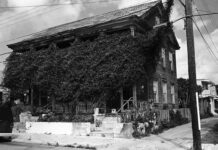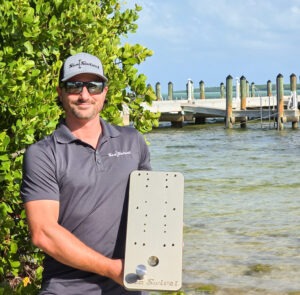
Ordinances pertaining to peacocks, Starck’s Wheel Ditch and backing movements onto a street right of way will take effect in the village of Islamorada following the council’s approval.
Taking or feeding peacocks in the village will be outlawed following the council’s unanimous vote to create new protections for the nonnative birds, which have roamed the area of Plantation Key for decades.
Specifically, the ordinance prohibits anyone from removing peafowl and their eggs. There are exemptions, however, for property zoned agricultural and for property owners who would like to remove peacocks from their property, so long as they don’t physically harm them.
The residency of peacocks in the village almost came to an end after a local homeowners association was seeking to have bounty hunters remove the birds, which have been flocking onto the Plantation Key property. It caused quite a stir in a community with residents who’ve come to adore the peacocks’ existence on the island.
A large response from the community to protect the peacocks led the Port of Call Townhouses Homeowners Association’s board of directors to hold off on their removal. Per the homeowners association’s attorney, the root cause of the peacock problem was the continuous feeding of the animals by two owners within the community — a violation of the association’s rules. Despite multiple violation letters sent by the association and its legal counsel, the letter states, these owners continue feeding the peafowl and exacerbating the issue.
Florida Fish & Wildlife Conservation Commission characterizes peacocks as nuisance birds, meaning they have no specific protections. The village’s ordinance, however, provides added protections to peacocks which many came to support when their removal and exit from the community was imminent earlier in the year.
In a bid to address safety concerns, the council approved a slow speed, minimum wake zone for Starck’s Wheel Ditch. Located on the bayside of Lower Matecumbe, the high-trafficked channel averages less than 100 feet in width with several small tributary creeks which are popular for recreation. These conditions often lead to conflicts between swimmers, kayakers and motorized vessels traveling at high speeds.
The council, along with the village’s Nearshore Water Regulations Citizens Advisory Committee, have discussed the need for establishing a slow speed, minimum wake zone through the wheel ditch. The new regulatory zone was proposed to mitigate dangers posed by the narrow channel, especially with high recreational use, poor visibility and speed of vessels through the channel.
In April, the council passed the ordinance’s first reading. Peter Frezza, village environmental resources manager, said it gave the village the ability to apply for permits for four buoys to mark the zone. Frezza said the permitting process through the U.S. Army Corps of Engineers could take six months to a year.
During an Oct. 7 meeting, village council members swiftly passed the ordinance on second reading. Mahoney, who was involved in establishing the zone with the nearshore citizens committee, said the ordinance is a “great thing” to address safety issues. Frezza said the new zone was backed by the public, Monroe County Sheriff’s Office and Florida Department of Environmental Protection.
Village council members also approved an ordinance to set a 20 mph speed limit for vehicles traversing on Cortez Drive. Earlier this year, various residents approached the village about lowering the speed limit on Cortez Drive on Lower Matecumbe Key from 25 miles per hour. Village staff determined that the maximum speed zone of 20 miles per hour is also a reasonable speed for Cortez Drive.
Another ordinance was approved to allow for backing movements and other maneuvering within a street’s right of way. Discussion over the Angler’s Reef Property Association’s tough parking situation on Windley Key brought the question why village staff weren’t considering angled parking. One of the reasons was due to the code, which prohibited backing movements within the street right of way, in this case the Old Highway. The village council ultimately tasked staff with writing a proposed amendment to the code to remove the prohibition when it pertains to a public purpose.



















